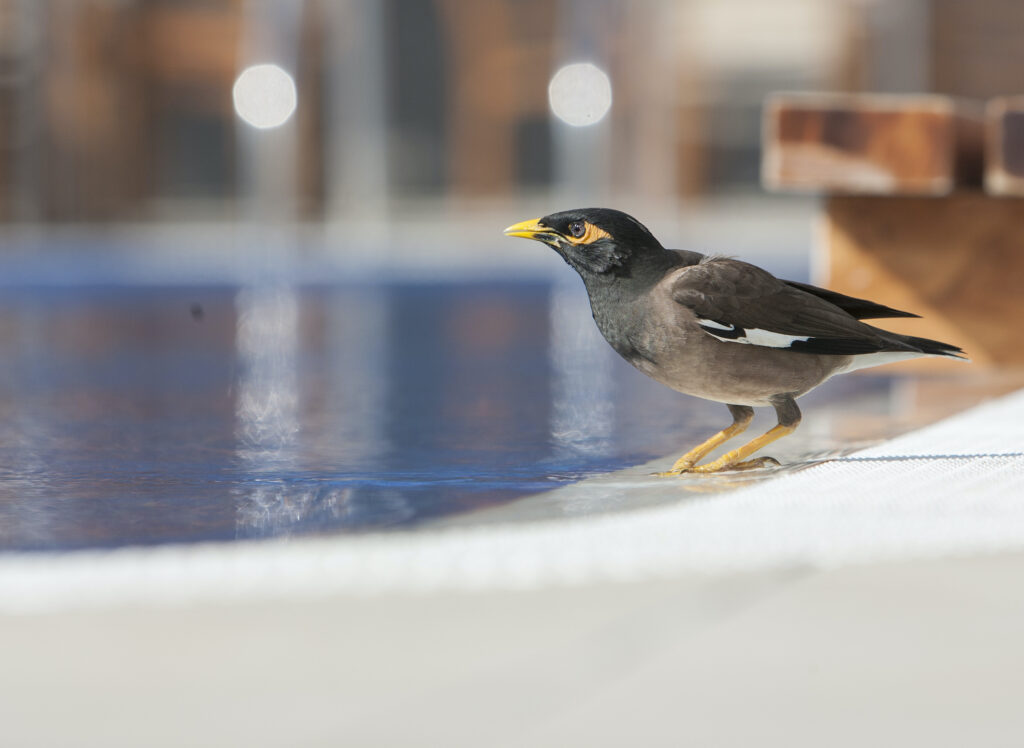Many of us are spending more time at home than ever before, longingly looking out the window. But that window, porch, yard, or garden isn’t just something to stare longingly through, it can be your ticket to the best show in town. No matter where in the world you are there is something to see from just outside your door—birds! Forget the television, birds are endlessly entertaining. By spending 5 minutes or more watching the happenings in your yard or garden you’ll get all the gossip, a free concert, and you might even be able to see your feathered neighbors build a nest and raise their young.
We’re excited to see that many of you are reporting what you see in your yard or garden. Here at eBird, we want you to track the birds you find at home to help scientists better understand bird populations where people live.
Whether it’s a new hobby or you’ve been tracking your yard or garden birds for years, we’ve got some tips for you to help you learn the birds in your yard and share your data with eBird.

American Goldfinch by David Disher/Macaulay Library.
Let’s get started:
Step 1. Grab a free tool to help you with Bird ID. If you’re not sure what species you saw, our free Merlin Bird ID app can help. Answer five questions and Merlin will give you a list of possible species or snap a photo and ask Merlin what you saw.
Step 2. If you’re new to eBirding, take our free eBird Essentials course. Here you’ll learn everything there is to know about eBird Mobile. It’s free and self-paced. If you have more questions about eBird visit the eBird Help Center.
Step 3. Download eBird Mobile for your phone. This app lets you easily keep track of the birds you see from home. You’ll need to create a Cornell Lab account. This is your ticket to everything at the Cornell Lab of Ornithology. Don’t have a smartphone, log your sightings at eBird.org.
Step 4. Start a checklist with eBird Mobile and record what birds you see. If you’re inside, open your windows so you can see and hear as much as possible. By doing so, you increase your chances of observing ALL the birds around you including the sneaky or quiet ones you might not have noticed otherwise. Reporting all the birds you can see and hear is the key to having what eBird calls a “complete” checklist. Complete checklists are lists that you submit while watching birds as your primary activity. These lists are the MOST valuable for science and the best way to detect less common species!
You can also keep an eBird checklist running throughout the day and jot down the species you spot out the window while you are doing other things, such as checking emails or participating in a Zoom meeting. However, these types of checklists must be marked as “incidental” checklists because watching birds was not your primary task. Incidental checklists are still valuable, but we encourage you to submit complete checklists whenever possible, so that your sightings can be used for a wider variety of scientific research.
Before you submit your data, create an eBird personal location for your home, give it a descriptive name, and use the same location for all subsequent home lists. When adding your location, you don’t need to place the pin exactly in your yard, you can place the pin nearby along your street and name the location by the street name.
Step 5. Track your yard or garden in eBird. Watch your yard or garden list grow and share what you see with friends and family. To track what you’ve seen in your yard or garden, log in to eBird and add your yard to eBird’s official ‘Yard’ tool. How do your species totals compare to your friends and neighbors, or fellow eBirders in your region? Once you’ve built up a history of checklists in your yard, you can make bar charts of when and how many birds you see throughout the year.

Common Myna by Dominic Garcia-Hall/Macaulay Library.
Home birding tips
If you want to build the biggest, best yard or garden list, we challenge you to focus on birds for at least 5 minutes a day. Better yet, set aside several 5-15 minute blocks throughout the day to look for and report birds from your home. Keep a separate eBird checklist for each block of time you are watching birds.
And remember that the birds you spot in your neighbor’s yard count for your list too! At eBird, we want you to count every bird you see or hear from your home, regardless of where the bird is. If you only count the birds within your yard, your checklist is incomplete!
Thank you for being part of the global birding community. Your observations help us better understand the birds near you.

